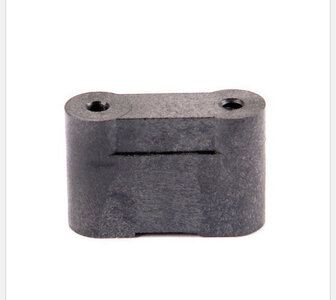Here's a post to prove signs of life. I haven't abandoned this project but I also haven't had time to touch this floating beer cooler since I last posted. Quite literally. Life really finds creative ways to get in the way sometimes. Thankfully things appear to be lightening up so I should be able to dedicate quite a bit of time to this project. If I don't get this hull on the water this summer I'm going to be pissed.
Without much time to work on fixing the hull I've simply been gathering parts in the background.
For starters I decided to ditch my 61x/62t 718cc powerplant I pulled from my Superjet. At this point I have 2x everything needed to put together two complete skis. So everything I pulled from the Superjet at the beginning of this post will be going back in the Superjet, with the exception of the Torrent 148mm pump. Though I may buy another one of those too, we'll see.
This change wasn't exactly planned. I had been mulling over buying a 950 from JetSki Nerd(s?) but
@Jyzmbe came out of the woodwork and offered to sell me a spare baby powerplant he built during covid but never used. I believe the motor has maybe 10 hours of runtime on it total since being built new, maybe less.
It's a 61x/62t that had fresh 760 sleeves pressed into it.
@Jyzmbe had the sleeves bored out +1 to ~780cc and installed a +4mm ADR stroker crankshaft. I believe (don't quote me) this brings the power output to ~900cc's. The cases have been epoxied and the cylinders aggressively ported.
Though not pictured because we were in the process of pulling the motor, fueling will be provided by a set of 50mm XScream Carbs mated to an XScream Intake Manifold and a Pair of VForce2/3 reeds (I forget).
Exhaust wise I will be running a mod chamber B-Pipe that I picked up from
@Krenn Power Sports. I'm hoping that I don't regret not running a PowerFactor Pipe but I didn't want to sacrifice fuel capacity by running a laydown pipe.
@Jyzmbe was kind enough to let me test the motor before pulling it from his DVX and it RIPS. He's talented enough to flatwater flip with this powerplant so I'm praying that I'll be able to backflip this boat behind a large boat-wake.
Electrics wise I picked up a used Cold Fusion Ebox from
@MarkWalker that needs a little TLC. I'll be stuffing a 62t Zeel in the box along with a fresh set of Yamaha electrics and a fresh
@JetManiac Yamaski coil. Everything currently in the box will go into my spares bin.
I'd take a better picture of the motor but it's currently wrapped up and sitting on a shelf in my garage.































